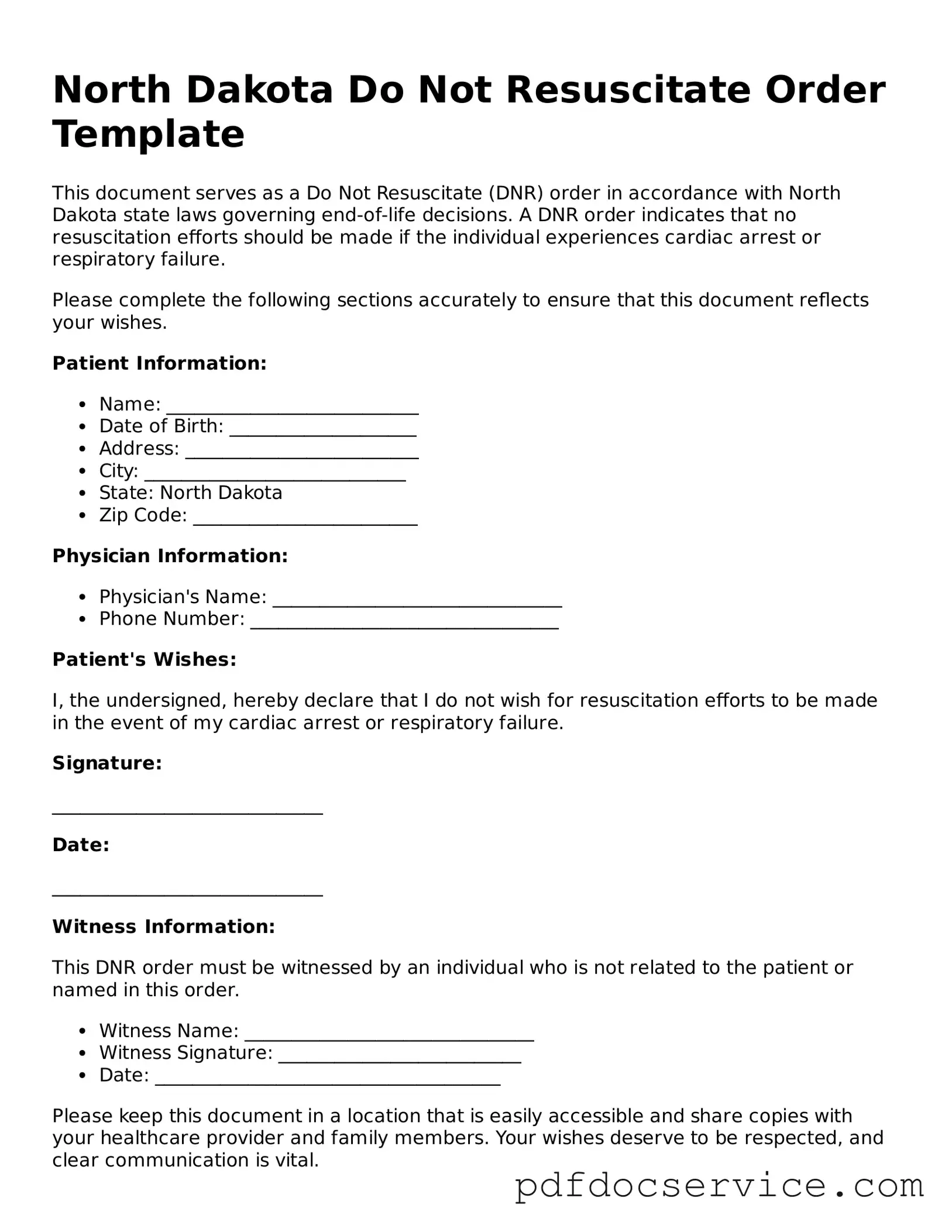What is a Do Not Resuscitate (DNR) Order in North Dakota?
A Do Not Resuscitate Order is a legal document that indicates a person's wishes regarding resuscitation efforts in the event of cardiac or respiratory arrest. In North Dakota, this order is designed to ensure that individuals who do not wish to receive CPR or other life-saving measures can communicate their preferences to healthcare providers.
Who can request a DNR Order in North Dakota?
A DNR Order can be requested by an individual who is at least 18 years old and has the capacity to make healthcare decisions. Additionally, a legal representative or healthcare proxy may request a DNR Order on behalf of an individual who is unable to make decisions due to medical conditions.
How is a DNR Order completed in North Dakota?
To complete a DNR Order in North Dakota, the following steps should be taken:
-
Obtain the official DNR Order form, which can be accessed through healthcare facilities or state health department websites.
-
Fill out the form with the necessary personal information, including the individual's name and date of birth.
-
Sign the form in the presence of a witness, who must also sign the document.
-
Provide copies of the completed form to healthcare providers, family members, and keep a copy for personal records.
Is a DNR Order valid in all healthcare settings?
Yes, a DNR Order is valid across various healthcare settings in North Dakota, including hospitals, nursing homes, and emergency medical services. It is essential that the order is properly completed and accessible to healthcare providers at all times to ensure that the individual's wishes are honored.
Can a DNR Order be revoked or changed?
Yes, a DNR Order can be revoked or changed at any time. The individual or their legal representative can do this by notifying healthcare providers and completing a new DNR Order form if necessary. It is important to ensure that all parties involved are aware of the changes to the order.
What should be done if a DNR Order is not honored?
If a DNR Order is not honored, it is important to address the situation promptly. The individual or their representative should communicate with the healthcare provider or facility to ensure that the order is recognized. In case of continued issues, contacting the appropriate regulatory agency may be necessary to seek resolution.
More information about DNR Orders in North Dakota can be found through the North Dakota Department of Health website. Additionally, healthcare providers and legal professionals can provide guidance on completing and understanding DNR Orders and their implications.
